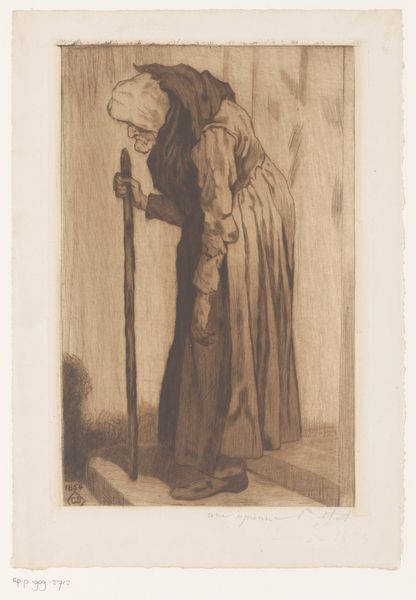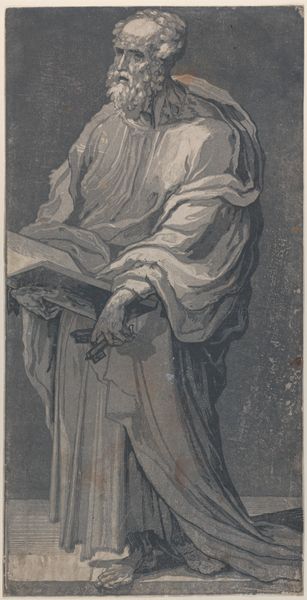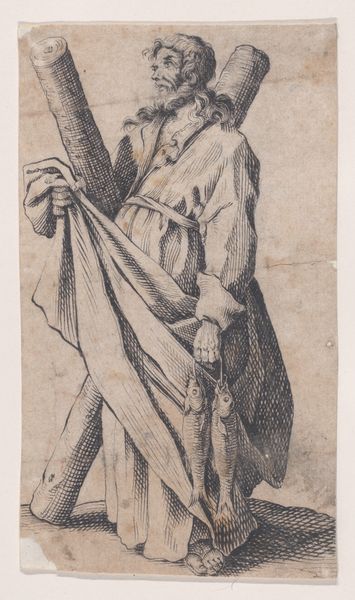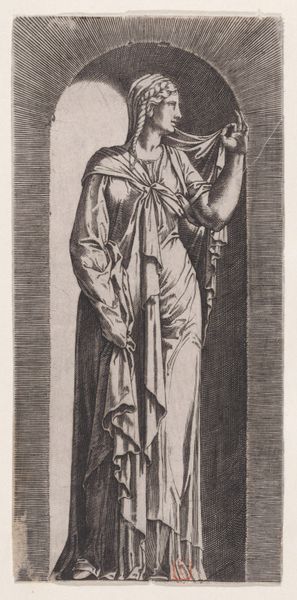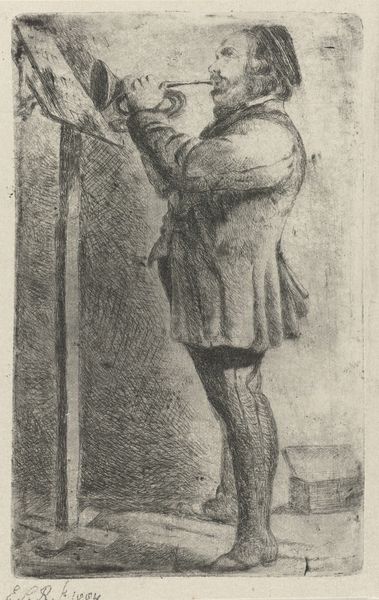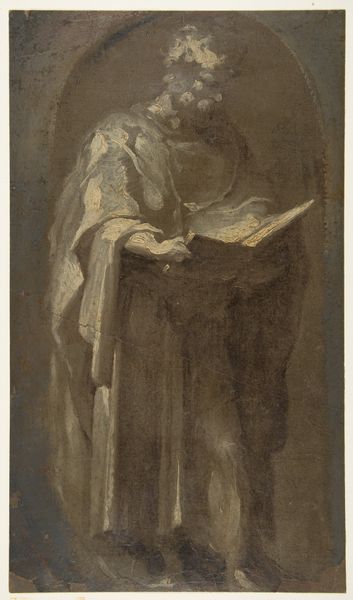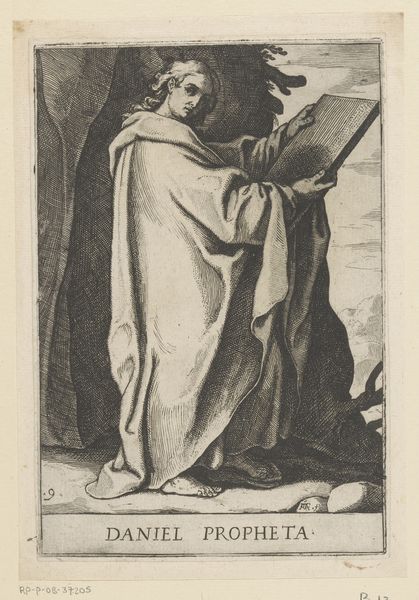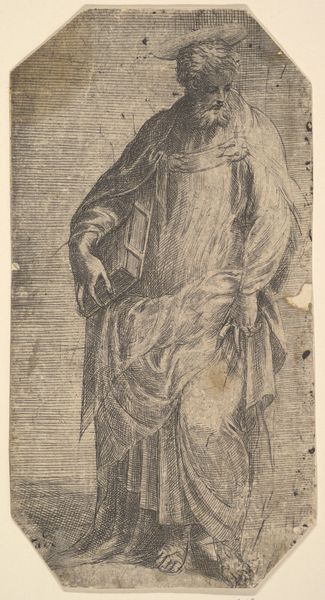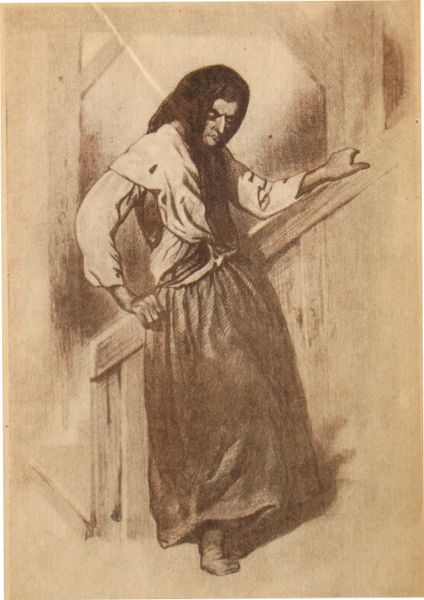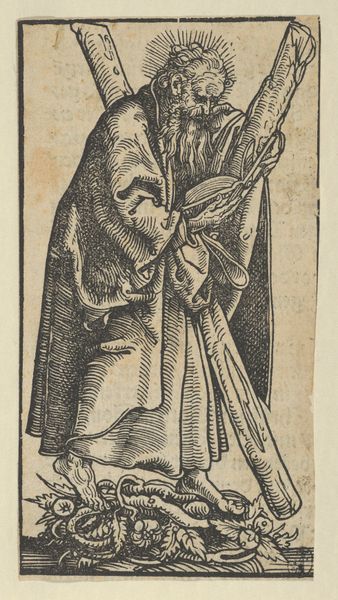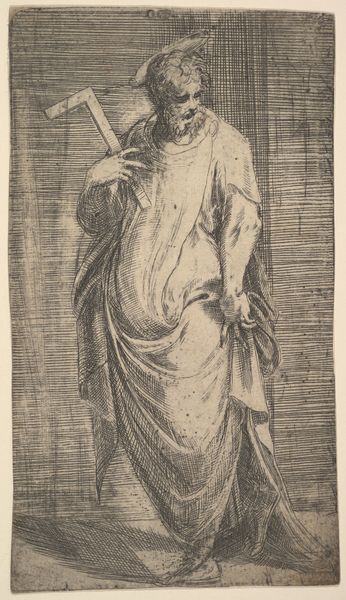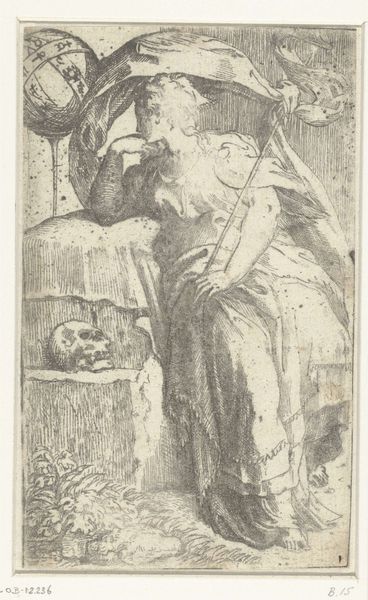
Dimensions: height 282 mm, width 170 mm
Copyright: Rijks Museum: Open Domain
Curator: This print, "Heilige Filippus," or "Saint Philip," created by Domenico Beccafumi between 1545 and 1549, depicts the saint in an austere, almost humble manner. What strikes you initially about it? Editor: It feels monumental despite probably being quite small. The way the lines create deep shadows really gives the figure a sense of weight and presence, like a carved sculpture almost. And look at his rough, bare feet! Curator: Exactly. Beccafumi was very interested in conveying not only spiritual symbolism, but also the tangible realities of religious figures. Saint Philip, one of the original twelve apostles, often carries a cross, symbolizing his martyrdom, which we see here, along with the book representative of his teachings. The texture rendered, I think, also echoes that of common, unschooled folk. Editor: And the way he renders the drapery – it’s almost like rough-hewn fabric, the folds are so stark. Was that common practice? It appears more labor-intensive, a lot more attention to detail, especially in this scale. Curator: This portrayal diverges a little. Consider that Saint Philip’s historical narrative is not as elaborately detailed as some of the other apostles. Beccafumi's approach creates space to position Philip as an accessible figure—almost a stand-in for anyone dedicated to their faith. The cross is prominent, and it highlights Philip’s commitment and ultimate sacrifice. It mirrors contemporary struggles, even now, when it comes to faith, devotion, and the materials we rely on to create meaning. Editor: I find it fascinating how he combines these almost brutal textural elements with a classical, almost idealized form. The musculature in his arms is subtly hinted at beneath the robes, suggesting strength beyond just the spiritual. Curator: Absolutely. Beccafumi is skillfully merging earthly and divine realms here. He makes visible the humanity in holiness, while subtly referencing the tools or, I suppose, instruments central to Christian belief. Editor: I’ll leave here thinking about what sacrifices and choices go into what kind of meaning we value materially in our lives, regardless of how we view that figure in front of us. Curator: And for me, thinking about art’s enduring power in bridging historical struggles to the challenges and complexities of contemporary devotion, and that commitment.
Comments
No comments
Be the first to comment and join the conversation on the ultimate creative platform.
